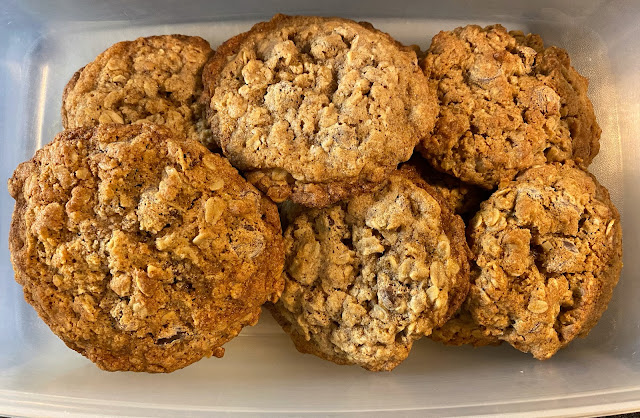In "The good life, part I," I talked about The Good Life, Robert Waldinger and Marc Schulz's 2023 book summarizing the chief lesson of the Harvard Study of Adult Development, which started in 1939. The lesson is that social relationships of all kinds are the key to human health and flourishing. As Peggy Liu et al. put it in their 2022 paper in the Journal of Personality and Social Psychology on "The Surprise of Reaching Out," "[m]aintaining connections in one's social circle is essential to well being." Even "brief interactions with a wide range of relationship partners are associated with positive psychological outcomes, including increased social and emotional well-being, protection from stressful events and anxiety, personal growth, and increased cognitive functioning." But even though we probably all know that intuitively, we often find ourselves out of touch with family and friends.
Professor Liu and her colleagues set out to determine why people don't "reach out" more often. They defined "reaching out" very broadly to encompass just a "minimum criterion consisting of a gesture to check-in with someone to show that one is thinking about them—for instance, by sending a short message (e.g., to say hi, to say 'I'm thinking of you,' to say 'I hope you are well') or a small gift." The message could be delivered by email, text, or phone. Through a series of experiments, they documented a significant underestimation by the "initiators" of such reach outs as to how much the "responders" appreciate their efforts. The authors of the study also found evidence to support a simple explanation for the difference in how initiators and responders perceive the reach out: since the initiators know they are reaching out, they don't experience any surprise; by contrast, the responders have no idea the reach out is coming so they experience a pleasurable jolt of surprise.
This may seem like common sense, like a fair bit of social psychology research, but it's still a good reminder. If you're thinking about reaching out to someone you haven't seen or spoken to in a while, do it. It'll be appreciated more than you think and create a pleasant social interaction for both of you. Even a quick text message will do.
*********
And if you really want to kick your reach-out game up a notch, bring or send whomever you're thinking of some of these cookies. I made these twice recently, and Brad has declared them his third favorite cookies. Can you guess numbers one and two?
Whole Wheat Oat Chocolate Cookies
Adapted from Deb Perelman via Smitten Kitchen (Sept. 30, 2020)
Time: (~20 minutes to make and scoop the cookie dough)
113 grams (1 stick) unsalted butter, cut into ½-inch chunks if cold
100 grams (½ cup) light or dark brown sugar
50 grams (¼ cup) raw or turbinado sugar (substitute the same weight of more brown sugar if you don’t have turbinado)
½ teaspoon fine sea salt
1 large egg (~57 grams still in the shell)
¾ teaspoon vanilla extract
½ teaspoon baking soda
¾ teaspoon baking powder
95 grams (~¾ cup) whole wheat flour (you can substitute medium rye flour)
25 grams (~¼ cup) wheat germ, wheat bran, oat bran, or finely chopped walnuts or pecans
120 grams (~1¼ cups) old-fashioned rolled oats
170 grams (1 cup) chocolate chips, or semisweet chocolate chopped into chunks
Flaky sea salt, optional
1. Place racks in the center of oven and heat to 350 degrees. Line two 13-by-9-inch baking sheets with parchment papers or silicone liners.
2. In a large bowl or a stand mixer fitted with the paddle attachment, beat the butter, both sugars, and salt together on medium speed (4 on our KitchenAid) until fluffy.
3. Add the egg and vanilla, and beat until mixed.
4. Sprinkle the baking powder and baking soda over the dough, and beat until fully mixed in. Using a silicone spatula, scrape the bowl down.
5. Add the flour, wheat germ, oats, and chocolate. Using the spatula or the “Stir” setting on your mixer, mix just until the flour disappears.
6. Using a #20 (3-tablespoon) disher (large Oxo cookie scoop), scoop the cookies onto the prepared baking sheets. You should have 6 or 7 mounds on each sheet. (At this point, you can refrigerate the dough, even for just 30 to 60 minutes but up to 3 days, especially if you like thicker cookies.)
7. When you’re ready to bake, sprinkle the tops with flaky sea salt if you’re into that (not required). Bake until the cookies are golden brown and delicious all over, about 12 to 14 minutes, rotating the baking sheets from top to bottom and front to back midway through.
8. Transfer the baking sheets to cooling racks and let sit for 5 minutes before removing the cookies from the baking sheets. Makes a baker’s dozen of 3- to 3½-inch-wide cookies, depending on whether you refrigerated the dough first (they spread more if you don’t refrigerate the dough).

No comments:
Post a Comment